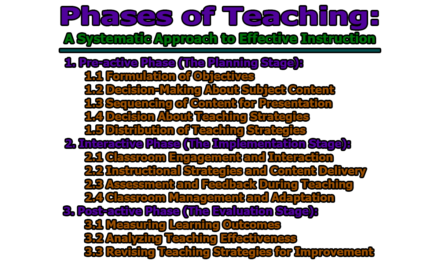How to Use Technology to Enhance Your English Language Understanding Online:
Learning English, once considered a daunting task, has become significantly more accessible and engaging thanks to technological advancements. In this digital era, individuals can harness the power of technology to enhance their English language understanding, whether for personal growth or academic purposes. In the rest of this article, we will explore how to use technology to enhance your English language understanding online.
The Four Domains of the English Language:
The English language is a multifaceted entity that encompasses various skills and competencies, commonly classified into four domains: reading, writing, listening, and speaking. These domains serve as the foundation for effective communication and language proficiency, and leveraging technology in each domain can significantly enhance the learning experience. Let’s explore each domain:
1. Reading: Reading is a fundamental skill that forms the basis of language comprehension. In the digital age, technology has revolutionized how individuals approach reading in the context of learning English. Personalized devices such as iPads and e-readers have become increasingly popular among English language learners. These devices often come equipped with specialized apps designed to cater to the learner’s needs. For instance, dictionary apps with phonetic assistance, reading apps with built-in dictionary functionality, and vocabulary-building software provide valuable support. Additionally, the read-aloud feature on these devices aids learners in understanding challenging written passages, further enhancing their reading proficiency.
2. Writing: Writing is a skill that requires precision, vocabulary, and grammatical accuracy. Technological advancements have introduced tools that empower learners to refine their writing abilities. The word processor is one such transformative tool that has become indispensable in the realm of writing. It offers features like spell check, grammar check, and access to dictionaries and thesauruses, enabling writers to enhance their vocabulary and correct mistakes effectively. Online platforms further provide opportunities for learners to engage with peers and educators, fostering collaboration and networking in written communication.
3. Listening: Listening skills are paramount in language acquisition, particularly for English as a Second Language (ESL) students. Technology plays a crucial role in providing diverse and accessible opportunities for learners to hone their listening abilities. Audiobooks, for example, allow students to listen to passages that may be challenging to read, promoting auditory comprehension. Podcasts, another powerful tool, expose ESL students to a variety of speaking patterns and interesting content, contributing to an enriched language learning experience. With technology, learners can immerse themselves in the language through regular exposure to spoken English in various contexts.
4. Speaking: The ability to articulate thoughts and ideas verbally is a key aspect of language proficiency. Recent technological breakthroughs, particularly in communication platforms, have revolutionized the way English learners practice and enhance their speaking skills. Video chat programs, such as those facilitating real-time communication with native English speakers, have become a game-changer. These tools enable students to engage in conversations, receive immediate feedback, and connect with language instructors globally. Video conferencing platforms also facilitate online spoken English lessons, providing a dynamic and interactive environment for learners to improve their speaking abilities.
Tech-Savvy Tools and Resources:
In the contemporary landscape of language learning, the integration of technology has given rise to a plethora of tech-savvy tools and resources that cater to diverse learning styles and preferences. These tools not only enhance the overall language acquisition process but also make it more engaging and interactive. Here is an exploration of various tech-savvy tools and resources that can significantly contribute to improving English language skills:
- Apps:
- Flashcard and Word Game Apps: These applications offer a gamified approach to language learning. Users can engage in interactive activities, including flashcards and word games, to reinforce vocabulary and grammar skills.
- Language Exchange Platforms: Certain apps provide a platform for global language exchange, allowing users to connect with speakers of the target language worldwide. This facilitates real-time practice, enabling learners to perfect pronunciation and conversational skills.
- Podcasts:
- Diverse Topics and Genres: Podcasts cover a wide range of topics, from fiction readings to discussions on current events. They provide an excellent avenue for learners to improve their vocabulary while enjoying content that aligns with their interests.
- Streaming Services Accessibility: Podcasts are widely available on various streaming services, making them accessible at any time. Learners can incorporate listening into their daily routines, such as during commutes or exercise sessions.
- Games (Mobile Games in English): Many mobile games, available on platforms like the App Store and Google Play, are designed to immerse players in the English language. These games often incorporate frequently used phrases and slogans, contributing to improved reading and grammar skills in an engaging manner.
- Videos:
- Instructive Videos on YouTube: YouTube serves as a rich resource for instructive videos covering various aspects of language learning. From basic lessons for beginners to advanced topics, learners can access a wide array of content to supplement their studies.
- Content Aligned with Online Classes: Watching videos related to topics covered in online English classes provides learners with a visual understanding of the subject matter. This can enhance comprehension and offer a different perspective on language usage.
- Music (Melodic Language Learning): Listening to music is a highly effective and enjoyable method for improving language skills. The melody and rhythm of songs can aid in vocabulary retention and pronunciation. Learners are encouraged to explore different genres and not shy away from listening to age-appropriate songs, including nursery rhymes for beginners.
Benefits of Using Technology in English Learning Online:
The integration of technology into English language learning online has ushered in a myriad of benefits, transforming the educational landscape and providing learners with new avenues for language acquisition. Below, we explore the various advantages that technology brings to the realm of online English learning:
1. Accessibility (Anytime, Anywhere Learning): Online English learning systems enable individuals to access language resources and information from virtually anywhere with an internet connection. This level of accessibility removes geographical constraints, allowing students to engage in learning whenever and wherever it is most convenient for them.
2. Personalization (Adaptive Learning Systems): Many online platforms leverage analytics and adaptive learning systems to tailor the learning experience to the individual learner’s abilities, weaknesses, and progress. This personalized approach allows students to focus on specific areas for improvement, resulting in more efficient and targeted learning outcomes.
3. Flexibility (Customized Learning Pace): Online English learning offers flexibility in terms of learning speed and schedule. Learners can progress through lessons at their own pace, accommodating various lifestyles and obligations. This flexibility is particularly beneficial for individuals with busy schedules or those juggling work and study commitments.
4. Cost-effectiveness (Affordable Resources): Online English learning platforms often come with a range of free or low-cost resources. This eliminates the financial barriers associated with traditional language learning methods, such as purchasing expensive textbooks or enrolling in classroom instruction. Cost-effective alternatives make quality language education more accessible to a broader audience.
5. Communication and Collaboration (Virtual Interaction): Discussion forums, chat rooms, video conferencing, and collaborative tasks are integral features of online English learning platforms. These tools foster communication and cooperation among learners, providing opportunities to engage with peers, instructors, and native speakers. Engaging in discussions and collaborating with individuals from diverse backgrounds enhances both language proficiency and cultural awareness.
6. Engaging Learning Experience (Interactive Multimedia): Technology-infused lessons often incorporate multimedia elements, making the learning experience more engaging and dynamic. Interactive videos, games, and simulations captivate learners’ attention and promote active participation, transforming them from passive recipients to active learners.
7. Real-world Application (Practical Language Use): Online platforms often include real-world language scenarios and exercises that simulate authentic communication. This practical application of language skills better prepares learners for using English in everyday situations, contributing to a more well-rounded language proficiency.
8. Immediate Feedback (Automated Assessment Tools): Technology facilitates immediate feedback through automated assessment tools. These tools help learners identify and rectify mistakes promptly, reinforcing a continuous learning cycle. Immediate feedback accelerates the learning process and ensures a more effective grasp of language concepts.
9. Rich Resource Availability (Multimedia Content): Online platforms offer a wealth of multimedia resources, including videos, podcasts, interactive games, and virtual reality experiences. These resources expose learners to diverse accents, vocabulary usage, and cultural nuances, enriching their language learning journey.
10. Motivational Features (Gamification and Progress Tracking): Many online language learning platforms incorporate gamification elements and progress tracking features. Achievements, badges, and progress metrics motivate learners to stay engaged and committed to their language learning goals.
How Technology Enhances Effective English Learning:
The integration of technology into English language learning has revolutionized the way individuals acquire and master the language. From interactive tools to immersive experiences, technology enhances effective English learning in numerous ways. Here’s a brief exploration of how technology contributes to the effectiveness of learning English:
1. Talk To Native Speakers (Online Language Exchange Platforms): Technology facilitates communication with native speakers through online language exchange platforms, social networking sites, and language exchange software. Engaging in conversations with native speakers exposes learners to authentic language use, diverse accents, and cultural nuances, significantly improving speaking and listening skills.
2. Multimedia Resources (Movies, Audio Clips, and Podcasts): Technology transforms language learning into a multidimensional experience. Learners can improve listening and speaking skills by watching movies, listening to audio clips, and downloading podcasts. Exposure to real language use, various dialects, and real-world scenarios contributes to more effective language acquisition.
3. Virtual Reality and Augmented Reality (Immersive Language Practice): Modern technologies such as virtual reality (VR) and augmented reality (AR) bring immersive language learning experiences. VR immerses learners in virtual situations, allowing them to practice language skills in context. AR overlays digital elements onto the real environment, creating interactive and engaging learning environments.
4. Take Courses Online (Diverse Online Courses): The availability of numerous online English language courses caters to learners of various proficiency levels. Whether free or paid, these courses offer flexibility and convenience, allowing individuals to study English at their own pace. Technology ensures that course materials, assessments, and interactive components are accessible from anywhere with an internet connection.
5. Real-time Feedback (Interactive Language Apps): Technology-driven language learning apps provide real-time feedback on pronunciation, grammar, and vocabulary usage. These apps often use speech recognition and artificial intelligence to assess and correct learners’ language skills immediately, fostering continuous improvement.
6. Social Learning Platforms (Online Discussion Forums): Technology enables learners to participate in online discussion forums, chat rooms, and collaborative tasks. Engaging in discussions and collaborating with peers from different backgrounds enhances both language proficiency and cultural awareness. Social learning platforms promote interactive and communicative language use.
7. Gamification (Language Learning Games): Gamification elements, such as rewards, badges, and progress tracking, make language learning more enjoyable and motivating. Language learning games, available on various platforms, provide a fun and interactive way to reinforce vocabulary, grammar, and language skills.
8. Access to Authentic Materials (Online Videos and Content): The internet offers a vast array of instructive videos on platforms like YouTube. Learners can access content ranging from basic lessons to advanced topics, providing a visual understanding of the language. Authentic materials help learners connect theoretical knowledge with real-world language use.
9. Immediate Application of Learning (Online Communication Platforms): The introduction of video chat programs and online communication tools allows learners to apply their language skills immediately. Engaging in real-time conversations with English speakers fosters practical application, builds confidence, and accelerates language learning.
10. Customized Learning Paths (Adaptive Learning Systems): Many online platforms employ adaptive learning systems, leveraging technology to tailor learning experiences to individual abilities. Customized learning paths address learners’ specific weaknesses and strengths, ensuring a more efficient and targeted language learning journey.
In conclusion, leveraging technology in English language learning is a powerful and dynamic approach. As we navigate this digital age, incorporating tech-savvy tools, resources, and online platforms can transform the language learning experience, making it more accessible, personalized, and enjoyable. Continuous practice, engagement with native speakers, and real-life application of the language are crucial elements in maximizing the benefits of technology for English language mastery.
Frequently Asked Questions (FAQs):
How does technology contribute to enhancing English language understanding online?
Technology plays a pivotal role by providing interactive tools, multimedia resources, and online platforms that cater to various learning styles. These tools facilitate engaging experiences, allowing learners to practice, receive feedback, and immerse themselves in the language online.
What are some effective tech-savvy tools for improving English language skills online?
Tech-savvy tools include language exchange platforms, interactive apps, podcasts, videos, and virtual reality experiences. These tools provide a diverse range of activities, from real-time communication with native speakers to immersive language practice in virtual environments.
Can online courses contribute to enhancing English language understanding?
Absolutely. Online courses offer diverse content, assessments, and interactive components that cater to learners of different proficiency levels. They provide the flexibility to study at one’s own pace, making them an effective means of enhancing English language understanding.
How can technology help in improving speaking and listening skills online?
Technology facilitates real-time communication with native speakers through video chat programs and language exchange platforms. Additionally, multimedia resources such as podcasts, videos, and virtual reality experiences contribute to improving listening and speaking skills by exposing learners to diverse accents and real-world language use.
Are there cost-effective options for utilizing technology to enhance English language understanding online?
Yes, many online platforms offer free or affordable resources, including language learning apps, videos on streaming platforms, and open-access online courses. These options eliminate financial barriers and make technology-assisted language learning accessible to a broader audience.
How can technology provide immediate feedback in English language learning online?
Language learning apps often incorporate features like speech recognition and artificial intelligence to provide immediate feedback on pronunciation, grammar, and vocabulary usage. These tools allow learners to receive constructive feedback in real time, fostering continuous improvement.
Can technology cater to individual learning styles and preferences in English language learning online?
Absolutely. Adaptive learning systems and personalized online platforms use analytics to tailor the learning experience to individual abilities, weaknesses, and progress. This customization ensures that learners can focus on specific areas for improvement, resulting in more efficient and targeted learning outcomes.
How to Use Technology to Enhance Your English Language Understanding Online.
How do online communication platforms contribute to the practical application of English language skills?
Online communication platforms, including video chat programs and discussion forums, offer opportunities for learners to engage in real-time conversations with English speakers. This practical application of language skills builds confidence and accelerates the learning process by providing immediate opportunities for learners to use their language abilities in context.
What role does gamification play in enhancing English language understanding online?
Gamification elements, such as rewards, badges, and progress tracking, make language learning more enjoyable and motivating. Language learning games, available on various platforms, provide a fun and interactive way to reinforce vocabulary, grammar, and language skills.
How can learners make the most of technology in their English language learning journey online?
Learners can maximize technology by exploring a variety of tools and resources, engaging in online courses, participating in language exchange platforms, and incorporating multimedia content into their study routines. Regular practice, curiosity, and a willingness to experiment with different tech-driven approaches contribute to a well-rounded and effective English language learning journey.

Assistant Teacher at Zinzira Pir Mohammad Pilot School and College










